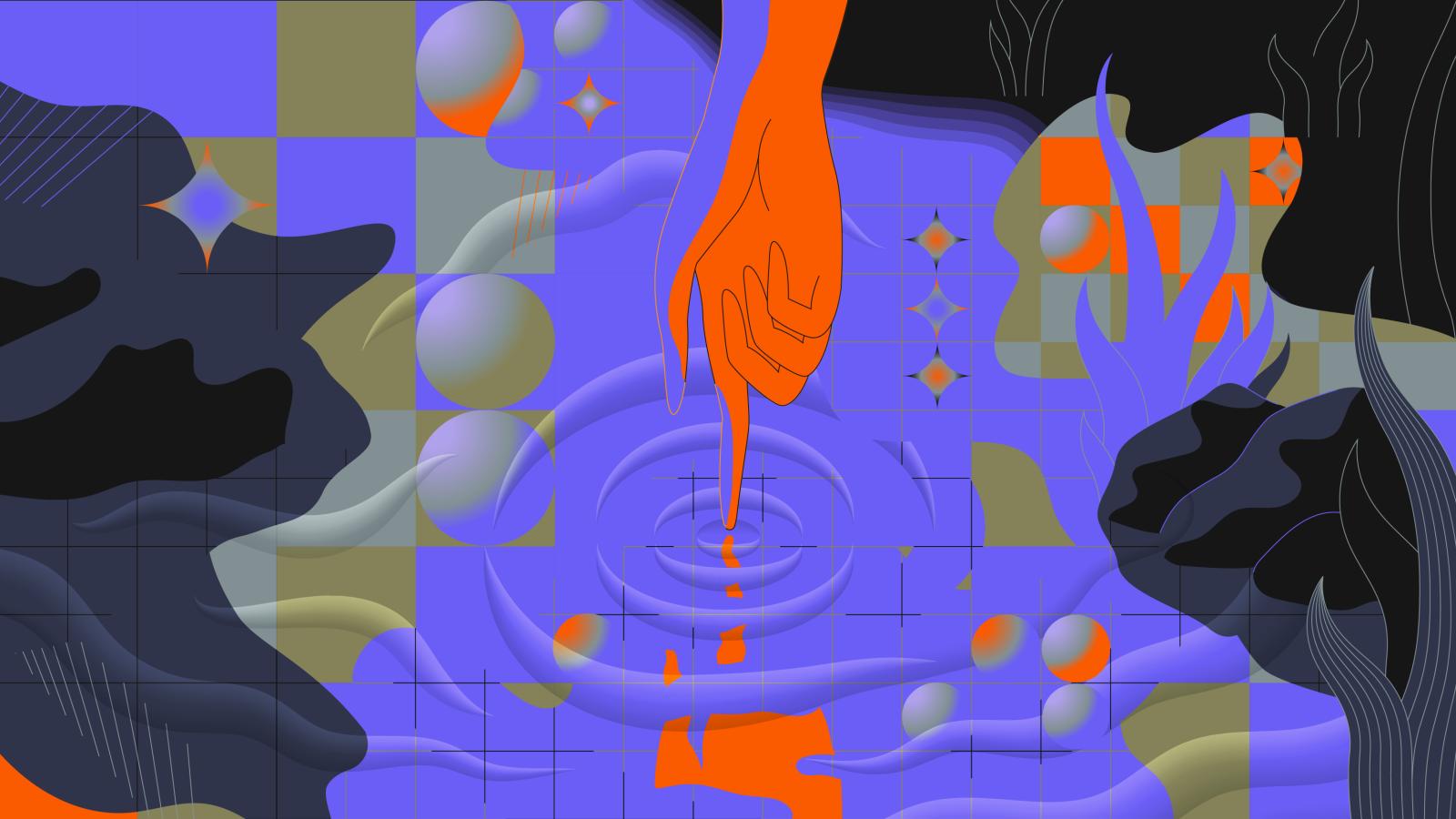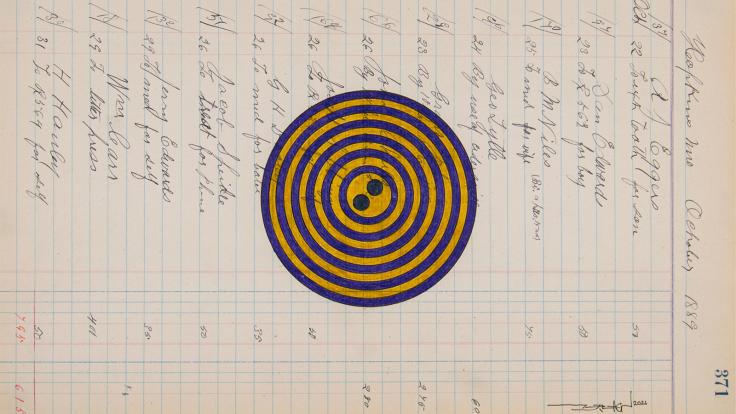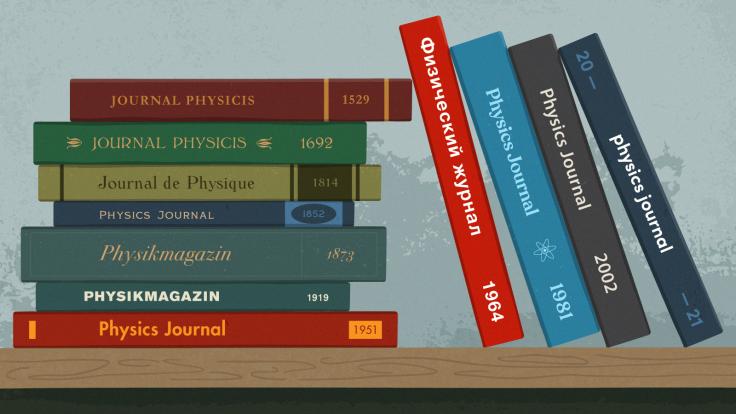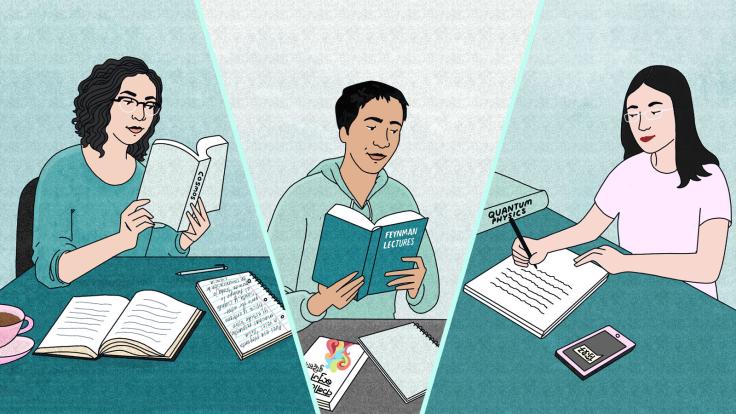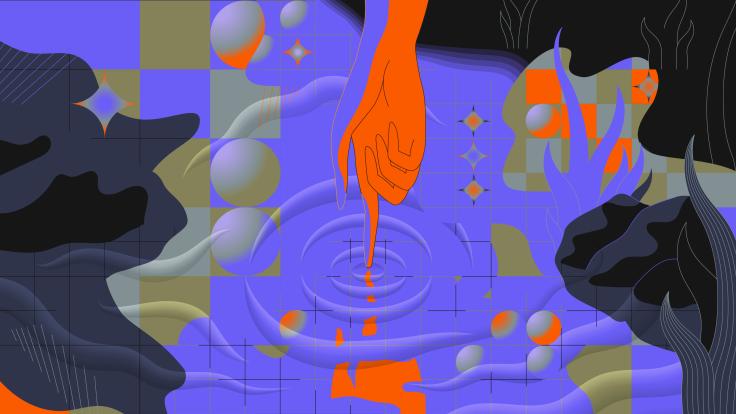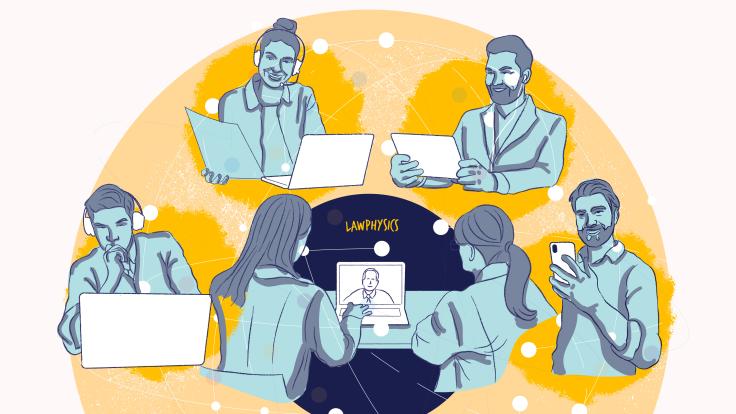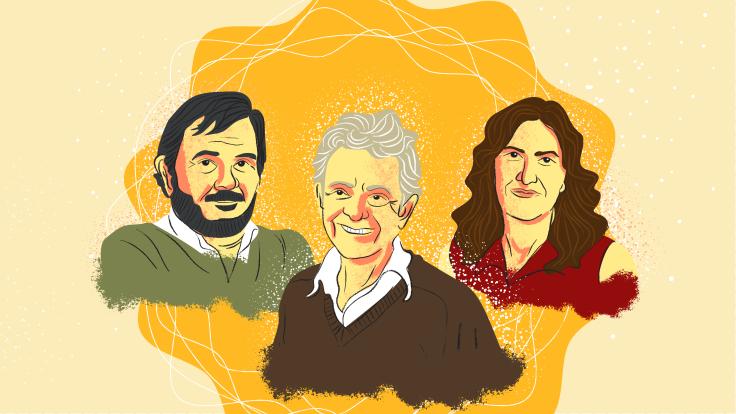In 1949 physicist Richard Feynman published the first of what would become known as Feynman diagrams, simple cartoons that described the interactions of particles.
The diagrams not only visualized the invisible, they became an important tool in calculations: a tiny marriage between art and math that brought about a new way to consider the smallest interactions in the universe.
It was this sort of visual thinking that, half a century later, drew Giordon Stark into physics. Growing up, he loved his chemistry classes, but it was math and physics—worlds of equations and problems he could draw out to consider and solve—that came so easily to him.
It made sense; growing up, he had become an expert in interpreting the visual. He started practicing so early in life that it wasn’t until he was 3 years old that his parents realized he was deaf.
Since then, much of his life has been spent in translation: learning to interpret his thoughts into vocal vibrations and mouth movements to pronounce words he had never heard in speech therapy as a child; turning his knowledge of English on its head while learning American Sign Language as a graduate student; and ultimately deciphering information from interpreters, captioners, and the lips of those around him as a scientist on the ATLAS experiment at CERN.
Now, as a postdoctoral fellow at University of California, Santa Cruz and one of the few deaf particle physicists in the field, he is working on translational projects of his own. At work, he is helping to build systems that make ATLAS analyses more accessible for theorists. In his spare time, he is creating new signs to communicate about science.
Not only that, he is taking his experience and helping build guidelines for the field to make it more inclusive. “Ultimately I’d like to see more deaf people involved in physics,” he says. “Hopefully it will be an upward trend that continues.”
Finding a community
When he was three, Stark received a diagnosis of severe sensorineural hearing loss. He thinks he was already reading lips at the time, since he doesn’t recall learning the skill. “I guess I’m just good at guessing what other people are trying to say,” he says.
At the time, he lived in South Florida, where ASL resources were slim, so he underwent 14 years of speech therapy, learning how to project his voice and enunciate words. At the same time, he was growing to love chemistry, then math, and ultimately physics.
He enrolled in Caltech after high school to study math, but he soon switched to physics and began to conduct research on the LIGO project, searching for gravitational waves. He eventually was accepted into a PhD program at the University of Chicago, where he found his way into high-energy physics research at the ATLAS detector with the help of UChicago professor David Miller.
“There are so many different avenues in particle physics where you can do research or try to answer questions about the nature of the universe,” Stark says. “There’s all these different parameters we can tune to find what we’re looking for. I like taking this gigantic, multidimensional problem and trying to break it down to understand what new physics might look like. Answering big questions like that is fun.”
In particle physics he also found a welcoming community, full of many people for whom English was not a first or even a second language. “That means everyone knows how to take turns during a video conference, and it makes it easier for interpreters or captioners to keep track of what is said,” he says.
No clear guidelines for accessibility worldwide
At UC Santa Cruz, Stark is now searching for new physics, working on hardware upgrades for the ATLAS inner detection system, and developing statistical toolkits to translate experimental results for theorists.
“Working with him has been really eye-opening and has helped us think about new things we can do with Large Hadron Collider data and how we can build better software systems,” says Mike Hance, assistant professor at the Santa Cruz Institute for Particle Physics and Stark’s adviser.
Members of the research group have tried to make sure Stark has as much access to information as they do. The group tries to rearrange their meetings so Stark can see everyone as they speak, and they often communicate over email, a medium at which Stark excels. “If you ask anyone at ATLAS if they know me, they usually do, because I email so much,” Stark says.
Nevertheless, Stark still runs into communication roadblocks. For starters, much communication in the world of physics happens informally, in the spaces between official conversations. “I tend to be the last in catching up on that,” he says.
And although he can read lips one-on-one and in small group settings, that’s not always how communication works. At conferences, big meetings and workshops, Stark requests interpreters or captioners. But because a scientific talk can be difficult even for a scientist to understand, and because sign-language interpreters generally do not have backgrounds in physics, some portion of the information is always lost in translation.
Stark generally needs at least a month of planning time to deal with the hiring and scheduling involved.
In the US, conferences wishing to comply with the Americans with Disabilities Act provide funding to ensure their event is accessible. But many conference organizers, especially those based in countries without such protections, say they don’t have the budget to do it. “There are no clear international guidelines for this,” he says.
Encouraging the value of slowing down
When Stark does have an interpreter for a conference, it’s often someone without a technical background. He usually arrives the day before to sit down with them and explain the dozens of ad-hoc signs he has created for the terms they’re going to need to use. Many are just initials—“d-m” for dark matter, for example. It’s not a perfect process, but it generally works.
It doesn’t, however, break down the other barriers that hearing people often unwittingly build.
“Deaf people know how to work with interpreters, and interpreters know how to work with deaf people,” says Stephanie Jo Kent, an ASL interpreter who worked with Stark at a recent ATLAS workshop at University of Massachusetts Amherst. “The problem is all the hearing people who are awkward and uneasy and try to pretend they are not in an intercultural situation.”
As part of the University of Massachusetts workshop, Kent interpreted for Stark at a poster session, where two graduate students were discussing their research. When Kent began interpreting their conversation for Stark, the two students began to act awkwardly, and the conversation became stilted.
“The student said to me, ‘I just don’t know who to talk to,’” Kent says. “People get lost in that awkwardness. It would help if they could watch a 10-minute video about this process beforehand.”
Kent, who has a PhD in communication, argues that communicating across different languages can benefit everyone involved. “We live in a time where people value speed above everything else,” she says. “Everybody just assumes they understand each other perfectly all the time. But in a group like this, there are social dynamics of power, privilege, authority and knowledge, and things can be interpreted in many different ways. There is value in slowing down.
“We need to understand that language is flexible, not fixed, and that a group like this can work together to use language to generate new innovative thinking and problem-solving,” she says.
Developing new physics ASL signs
Over the course of his career, Stark has developed new signs to use in communication with interpreters. But he’s interested in seeing the signs extend to other conversations as well. Stark is working with a panel of language experts at a Deaf-centric project called ASLCore to develop physics signs for Deaf scientists to use to communicate with each other.
The process involves some of that visual thinking that Stark is so familiar with. “English is matter-of-fact, but you can make signs more visually clear,” he says.
When developing a sign for a particle collision, for example, Stark argued that they couldn’t just show two fists crashing together and then coming to a stop, since that isn’t technically accurate—when a pair of particles collide, their energy is released in showers of other particles. They finally settled on the signer sending their hands past one another and then flicking their fingers out to show the resulting sprays of particles flung in either direction.
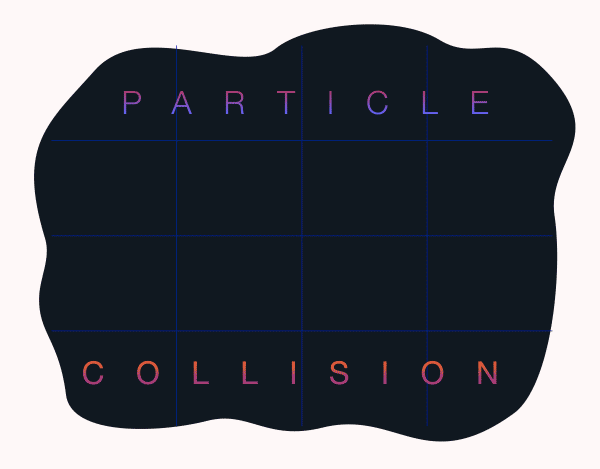
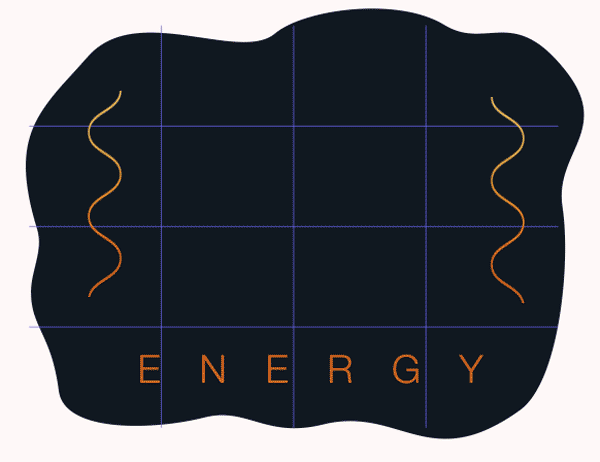
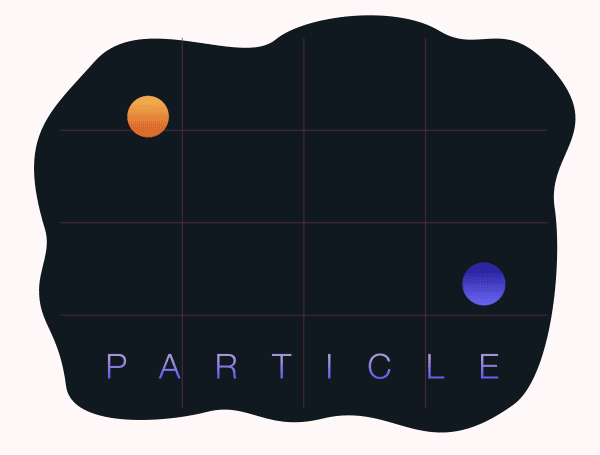
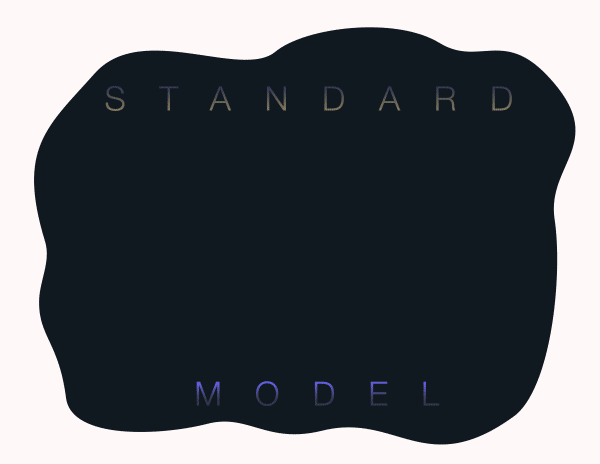
Stark is also working to make physics more inclusive by serving on the US ATLAS Diversity and Inclusion Committee. They’ve created a checklist of needs to consider in designing an inclusive conference, which include gender-neutral bathrooms, wheelchair accessibility and affordable registration costs. His ultimate wish is centralized funding that would allow him and other future deaf physicists to bring interpreters with a STEM background on their travels to conferences around the world.
This sort of inclusion work can only benefit everyone, Hance says. “We’re really excited that we have somebody in our department who is a strong advocate for a diverse community,” he says. “In science, the currency we have is creativity and ideas that allow us to pursue the big questions we want to answer. Science comes from all places, and we need to be welcoming of that. Having a diverse population of researchers is a great way to generate new ideas.”
Stark has also started giving presentations on his experience, most recently at the 2019 meeting of the American Physical Society’s Division of Particles & Fields. “People realize that there are perspectives within particle physics that are pretty under-represented, and it would be beneficial if steps were taken to ensure everything we do is accessible,” he says.
During a stay at CERN in 2016, Stark was asked if he could create a video in ASL that explained his experimental work. The video is now on display at CERN’s Microcosm exhibit and is posted online as part of a collection of explanatory videos in different languages. Stark has heard from deaf Italian and French visitors to CERN who were excited to see a scientist communicating in sign language, even if it wasn’t their own. “I’ve become known as the Deaf CERN guy,” he says.
Beyond the world of physics
Although Stark dreams of becoming a physics professor, he also wants to develop more ASL signs and is even considering becoming a certified deaf interpreter himself. He could work in partnership with a hearing ASL interpreter and ensure that scientific concepts are communicated accurately.
In the meantime, when he’s not advocating for diversity, Stark loves to attend musicals, and recently convinced a local production of Into the Woods to provide an ASL interpreter for a performance. For stress relief, he has revived his love of chemistry in the form of baking bread. That, too, has impacted both his work and the work of his colleagues.
“It’s knocked a few of us off our diets, having a Bundt cake sitting in front of us at our group meeting,” Hance says.



